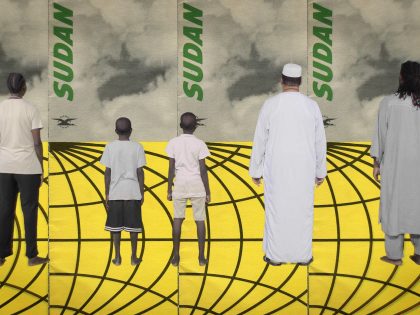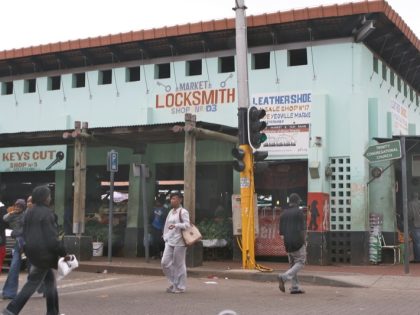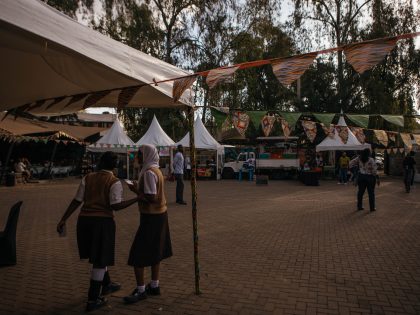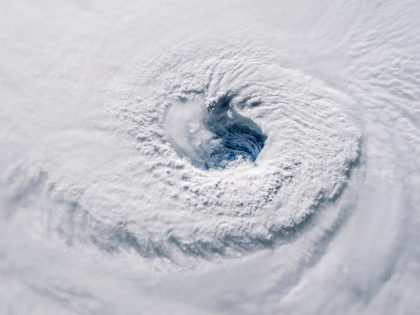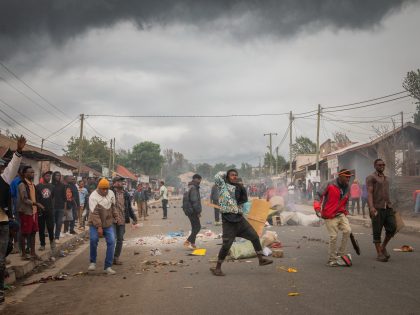Witnessing the crimes and end of empire

Credit: Goodman Gallery
“The sun never sets on the British empire.” The saying, commonly associated with the poet of empire, Rudyard Kipling, refers to the vastness of the British dominions—with territory in every time zone, it was always daylight somewhere the British ruled. An abbreviation of the phrase, “The Sun Never Sets,” is also the title of Canadian artist Kapwani Kiwanga’s show at Goodman Gallery, Johannesburg (21 October-18 November 2017), her first solo exhibition, not only in South Africa, but on the continent.
If you take a moment to consider it, the title is an apt and ironic name for this show; a film montage of sunsets over different countries (Canada, Ireland, Myanmar, Tanzania, India, Australia, New Zealand, Zanzibar and Hong Kong) that once were part of the British empire. The debris from Britain (actually England)’s former empire continues to gather into a bigger mountain, so not only is Britain without its vast possessions of old, but the island kingdom itself is about to further disintegrate as the Scots consider this relationship.
When you consider this constriction of Britain, especially in the context of Brexit, it takes some effort not to sit down and laugh for hours. (I am reminded of that passage in Trainspotting, Scottish writer Irvine Welsh’s 1993 cult classic, which reads, “Fuckin failures in a country of failures. It’s nae good blamin it oan the English fir colonising us. Ah don’t hate the English. They’re just wankers. We are colonised by wankers. We can’t even pick a decent, vibrant healthy society to be colonised by. No. we are ruled by effete arseholes. What does that make us? The lowest of the low, the scum of the earth. The most wretched servile, miserable, pathetic trash that was ever shat intae creation…”)
As all of this is going on, here, on the southern tip of the continent, South African youth, Nelson Mandela’s bastards, if you don’t mind, are not only querying this country’s own position as a former key outpost of the British empire but also questioning the foundational myths of the Rainbow Nation.
Given Kiwanga’s background, it’s not a surprise that it’s the Paris-based artist whose show, comprising both sound and video installations, silk screen prints and photographs, that is asking these questions. When I interviewed her in 2015, Kiwanga told me, “I am interested in history, science and science fiction.” The artist’s interest in history and science especially is evident in this show. Kiwanga studied anthropology and comparative religions at McGill University, Montreal, Canada – and, eschewing a career in academia, spent some time in Europe working on documentary film before deciding to become an artist.
Even though she has made use of her background in television work in her art practice, as is apparent in the video work which gives the show its name, it was arguably as a performance artist that she gained a name. In 2011, she started a series of lecture performances known as Afro-Galactica, a trilogy of performances, part ironic, part erudite and part arcane, which had, as their chief protagonist, an anthropologist of the future. In the series, set in the year 2100 (in the worst of my dystopian nightmares, Robert Mugabe is still alive, still sitting on the throne), this anthropologist of the future ponders the United States of Africa, a vast territory stretching from the Cape in the south to Cairo in the north, Djibouti in the east to Dakar in the west.
In “The Sun Never Sets”, there is a dimming glow set over marshy lands, and then the sun about to go beyond a mountain range; and a sun in an eclipsed mode over a crepuscular landscape; and a bright glow over savannah country and a dying sun over water… The trick in this installation, perhaps, is this perpetual sunset, a sunset suspended over various landscapes and continents, perhaps pointing to the futility of the imperial project.
Who really wants to be bathed in eternal sunlight?
When she staged The Deep Space Scrolls lecture performance, the third installment in the Afrogalactica series in Johannesburg in 2015, I asked her to explain her fascination with history. “It is important to embrace and understand one past; when I say one’s past I mean humanity’s past…” she said.
Even though there is in Kiwanga’s work a fascination with history with a capital H, which is, I guess, what she meant when she spoke about “humanity’s past,” there is interest in what we could call quotidian histories or historical events viewed from “unimportant” witnesses. How daily human agency impinge on the “larger” histories and geographies. In some ways her decision to do lecture performances was influenced by her suspicion of the hegemony of “mainstream” knowledge.
“I am interested in what becomes accepted as science, authentic, plausible and what is dismissed as silly, not respectable. The boundary between establishment knowledge and marginal knowledge is interesting for me,” she told me in 2015. “Often in things that might be false or non empirical, there is always some truth in there about the community, history; there is always something to be taken from those things.”
Take, for instance, her vector drawings of desire paths in Langa, Soweto and other South African townships which she printed on to white cloths loosely attached to steel mesh. “These desire paths become a double-edged sword in that they show agency in people not adhering to the grid system set out for them and [so] moving around as they need to but [this] also speaks to the absence of infrastructure.”
An instance of history viewed from these “unimportant” witnesses is evident in her “Flowers of Africa” series, which she has reprised in this show, a concept she happened on in 2011 when she was invited on a residency to Dakar, Senegal. There she had spent a lot of time looking at the iconography in the national archives, checking out images of people and politicians, but didn’t quite find anything that seized her imagination. She was “looking for an alternative history of the moments and I was trying to look more on the periphery, at the outside, at things that are not framed as central.”
In the archives she saw images of floral arrangements at independence negotiations or celebrations and thought of mainstreaming the perspective of these flowers. “I see those as witnesses of sorts. The question of witnesses who are, maybe, not always vocal or animate, or inanimate, depending on what your beliefs are, is interesting,” she told writer and critic Sean O’Toole in the book African Futures (2016), a record of the proceedings of a conference hosted by the Goethe Institut in 2015 which brought thinkers, theorists and artists from all over the world to deliberate about the continent’s future.
This idea of flowers as witnesses made me think of my paternal grandmother, born in Southern Rhodesia (now Zimbabwe) of the 1910s, and what she always said about how sometimes the worst thing you could ever be in colonial Rhodesia was to be a witness to a crime or incident. If, say, you saw someone drown, it was better to say you hadn’t seen anything because the cops could accuse you of murdering the deceased. Officialdom was better avoided. Which makes the mainstreaming of the testimonies of inanimate objects like flowers an instance of self-preservation, a revolutionary act even, preserving the self so that you can live to fight another day.
This anecdote aside, considering how most African countries turned out when the sun eventually set on the empire, the flowers perform another metaphorical role, showing the fragility of the new state and of the urgent imperative to water and look after the flowers.
The perishable aside, the show also features a series of photographs of rocks folding into each other in a process known in geology as subduction. The tectonic plates of the African continent are moving in the direction of Europe at the rate of about 1cm per year while Europe is also approaching the continent at the rate of half a centimeter per year, from the opposite direction. It’s difficult, as you look at these images, not to remember how, above the ground, there is a mirror migration going on as Africans fleeing hunger, political persecution and war, move to Europe. Thousands of those who migrated have, sadly, not made it to the shores of Europe.
Gondwanaland, the ancestor unified land mass from which Africa, the Americas, Europe and Asia broke off, will become a reality again. While we figure out how to deal with Jacob Zuma and Mugabe and other autocrats foisted on us by the nationalist politics that sought to end empire, one thing which is for certain is this huge landmass of Gondwanaland won’t be lorded over by the British. Those wankers’ sun, happily for us, has long since set and will never again rise.













